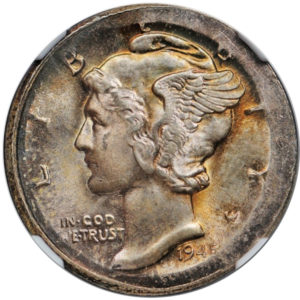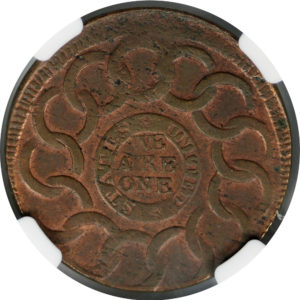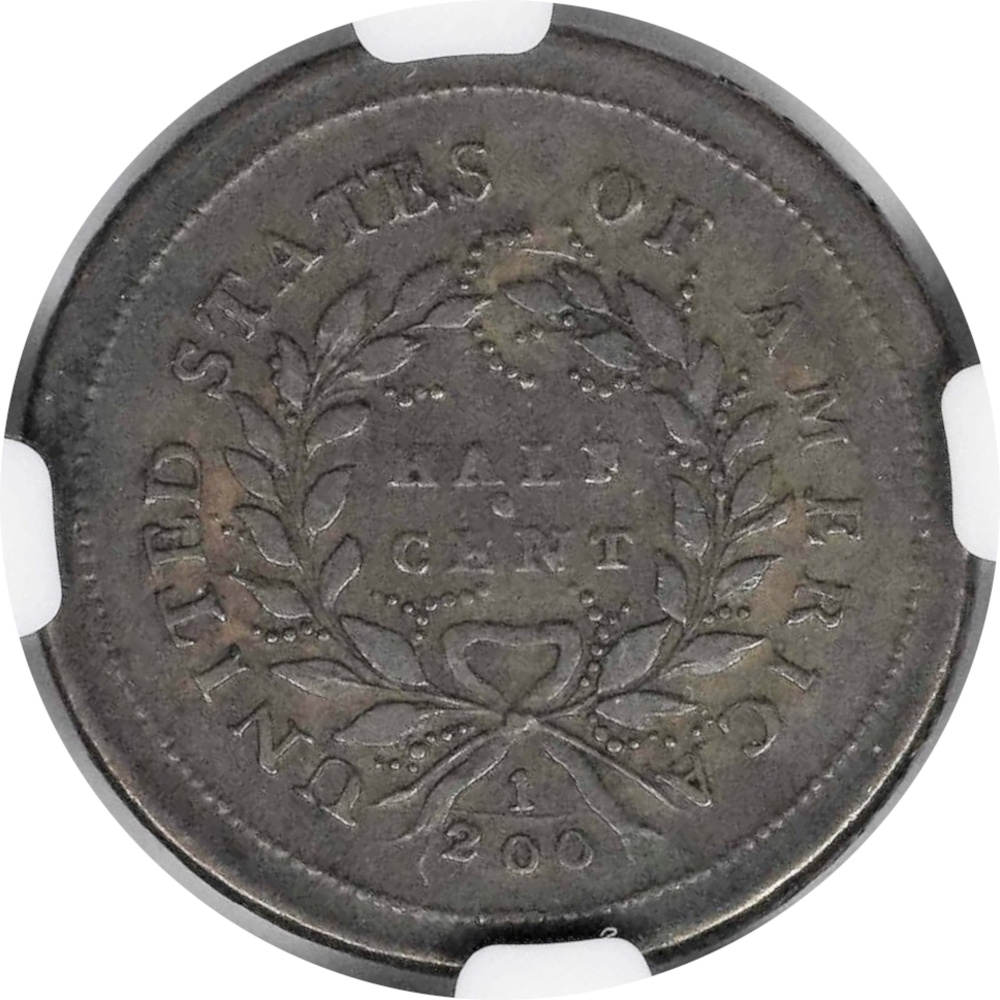1792 H10C Half Disme, Judd-7, Pollock-7, R.4, MS63 NGC. From the research staff at Heritage: In the American Numismatic Society’s American Journal of Numismatics #15 for 2003, Joel Orosz and Carl Herkowitz, explore all aspects of the production of these first official United States coins. The article, “The Fabled 1792 half dimes,” is well worth the effort for anyone interested in early U.S. coinage.
The authors discovered an obscure reference to a tipped-in note that was discovered in a European coin book in 1943 and the contents of the note were subsequently published in The Numismatist. Orosz and Herkowitz identified the actual author of the note as John McAllister, Jr., a fascinating individual who was a close friend of Adam Eckfeldt, who was present at the striking of the 1792 half dismes. The actual content of the tipped-in note reads:
“In conversation with Mr. Adam Eckfeldt (Apr 9, 1844) at the Mint, he informed me that the half dismes above described, were struck, expressly for Gen. Washington, to the extent of One Hundred Dollars, which sum he deposited in Bullion or Coin, for the purpose. Mr. E. thinks that Gen. W. distributed them as presents. Some were sent to Europe, but the greater number, he believes, were given to friends of Gen. W. in Virginia. No more of them were ever coined. They were never designed as Currency. The Mint was not, at the time, fully ready for being put into operation. The Coining Machinery was in the cellar of Mr. Harper, saw maker, at the corner of Cherry and 6th Sts, at which place these pieces were struck.”
While the facts in the note above may have been well-known to a small group in the mid-1840s, later retellings of the story stretched and greatly enhanced the basic facts until the present day, when it is still believed by many that Martha Washington was the model for the figure of Liberty, the coins were struck from Washington’s Sheffield silver plate, only $75 worth of coins were struck, and that George and Martha were in attendance when the coins were presented. Skipping to the end of this masterful article, Orosz and Herkowitz’s conclusions are:
The half dismes were not struck from sterling silver or silver-plated tableware but rather, as Eckfeldt states, from bullion or coin.
The half dismes survive today at an unusually high rate, consistent with early presentation to at least some degree.
The amount struck (1500 pieces or $75) is consistent with an initial deposit of $100, with the loss due to preparation.
After the planchets were prepared, they were deposited with the cabinet officer in charge of the Mint. Jefferson personally delivered the blanks to the Mint to be struck, and the struck coins were returned to his care.
Jefferson recorded all transactions regarding the 1792 half dismes as private records, not public records.

























